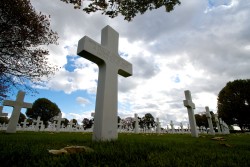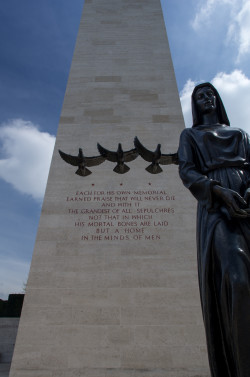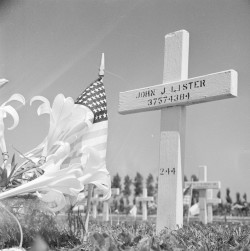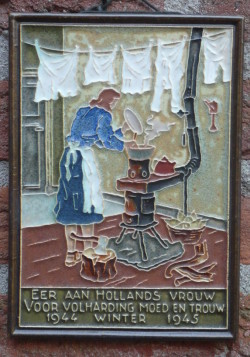
Posting this blog on or near the fifth of each May has been a tradition for me.
Liberation Day (also known as Freedom Day) for Holland was 5 May 1945. Canadian forces along with other Allied forces were able to obtain the surrender of German forces in the small Dutch town of Wageningen. This led to the complete surrender and liberation of the country.
NETHERLANDS AMERICAN CEMETERY (MARGRATEN)

There is a cemetery near Maastricht. It is the final resting spot for 8,301 American soldiers and a memorial for the 1,722 men missing in action. They were the casualties of Operation Market Garden (17–25 September 1944) and other battles aimed at liberating Holland. Operation Market Garden was a failed Allied attempt to liberate Holland on their path to Berlin. Other military cemeteries are located nearby for the British and Canadian men who did not survive the battle.

Individual Dutch families have adopted every man who perished in the battle. Each man’s grave is kept up and decorated by their adopted family. Even a portrait of their adopted soldier sits in their respective homes.
HONGERWINTER

The Dutch railway workers called a strike during the battle believing it would increase the chances of success by the Allied forces. The battle failed and Holland would have to wait another seven months to be liberated. In the meantime, Arthur Seyss-Inquart, leading the Nazi occupation of Holland, refused to allow any food into the country. Holland was literally being starved to death during the Hongerwinter (winter of hunger). More than 20,000 people died that winter of starvation. If you read any biography of Audrey Hepburn, you will hear about her experience as a teenager during that time. Seyss-Inquart was one of the Nuremberg defendants tried, convicted, and executed for various war crimes.
LIBERATION DAY
Every May on the fifth, Liberation Day is celebrated in Holland. For two minutes, everything and everybody stops while the church bells ring. At the end of the day, a concert is held. Beginning in 1965 (the 20th anniversary of the liberation), Nino Rossi’s taps called “Il Silenzio” is played as the final piece of the concert.
I will never forget as a 10-year old living in Wassenaar Holland beginning in 1965, stopping on the street wherever we were at the time. We stopped talking and listened to the church bells ring for 2 minutes—every year on 5 May.
I invite you to click on the following link and listen to a 13-year-old Dutch girl, Melissa Venema, play “Il Silenzio” during the 2008 concert celebrating the liberation of Holland. The Royal Orchestra of the Netherlands backs her up. It is very moving—at least for the former 10-year old, now 62 years young.
Grab a tissue before you listen to this. I do.
PRESIDENT’S SPEECH
“On this peaceful May morning we commemorate a great victory for liberty, and the thousands of white marble crosses and Stars of David underscore the terrible price we pay for that victory. For the Americans who rest here, Dutch soil provides a fitting home. It was from a Dutch port that many of our pilgrim fathers first sailed to America. It was a Dutch port that gave the American flag its first gun salute. It was the Dutch who became one of the first foreign nations to recognize the independence of the new United States of America. And when American soldiers returned to this continent to fight for freedom, they were led by a President (Roosevelt) who owed his family name to this great land.”
George W. Bush
President of the United States
28 May 2005
Netherlands American Cemetery
What’s New With Sandy and Stew?
We are getting ready for our visit to Paris in September 2017 to wrap up the on-site research for the next book Where Did They Put the Gestapo Headquarters? A Walking Tour of Nazi Occupied Paris (1940–1944). We’re looking forward to seeing our friend, Raphaelle Crevet. She is a talented private guide and I highly recommend her if you are visiting Paris and some of the attractions outside the city (raphaellecrevet@yahoo.fr).
We have a lot of stories and we’re looking forward to sharing these with you. Please continue to visit our blog site and perhaps you’d like to subscribe so that you don’t miss out on our blog posts, past and current.
Thank You
Sandy and I appreciate you visiting with us. We have some exciting things on the horizon and we’ll keep you updated as we go along.
Follow Stew:
Find Stew’s books on Amazon and iBooks.
Blogs I Follow
Book Reviews
Please note that we do not and will not take compensation from individuals or companies mentioned or promoted in the blogs.
Walks Through History
Copyright © 2017 Stew Ross


